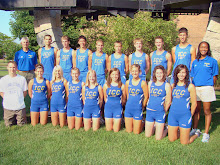From "Stride Length and the Human Organism," by Scott Christianson.
In Track Coach, Winter 2007
As a runner becomes more efficient through training, running economy iproves. The body creates its own combination of stride length and stride frequency to achieve the desired velocity. Both too much time in the air and too much time on the ground hinder velocity improvement. Time on the ground is regulated by stride rate. Time in the air is regulated by stride length.
Studies have shown that reducing contact time is the key to improving performance. For a distance runner to reduce contact time by .02 second per stride would lead to marked improvement. The main way to achieve this is to shorten the stride, thus reducing braking forces. Identifying the proper stride length can be achieved through core strength improvement, joint mobility increases, and drills designed to improve balance and stability, such as lunges and limited bounding.
Over striding can be detected by observing the arms crossing high over the front-side sagittal plane. This indicates too much rotation of the pelvis.
Thinking about your efficiency as you run will not only help you to run faster, but will also reduce your chance of injury. Running smarter leads to running faster.
Monday, March 12, 2007
Subscribe to:
Comments (Atom)


